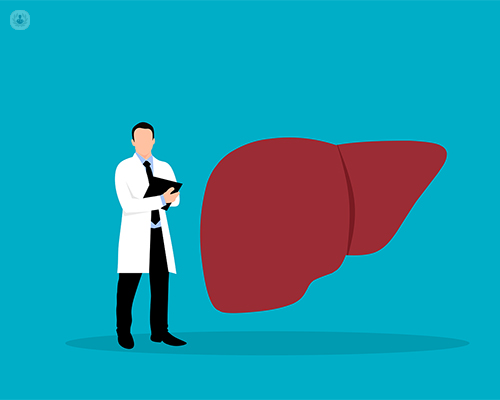FibroScan FAQ: Your questions answered
Escrito por:FibroScan is a tool used to offer instant insight into a patient’s liver health. In his latest online article, esteemed consultant hepatologist Professor Patrick Kennedy answers your most commonly asked questions about this new tool.

What is FibroScan and what is it used for?
FibroScan is a non-invasive tool used to measure liver damage in the clinic. At this point, I would consider it an integral part of our investigation and management of patients because it is such an easy test to undertake during a clinic visit. With FibroScan, we can obtain results instantaneously and provide them to the patient. This tool informs us about fibrosis, the degree of liver fibrosis, and the degree of fat within the liver. Previously, we would have had to rely on a liver biopsy for this information, which is an invasive test. FibroScan is a simple non-invasive tool that provides immediate results in the clinic, aiding in better understanding liver disease and making management decisions.
How is a FibroScan performed?
FibroScan is performed in the clinic after a patient fasts for some time. They will then attend the clinic and be seen in the examination room. The procedure is similar to a simple ultrasound scan, but FibroScan generates a shear wave, and we measure the return speed of that shear wave, which indicates the stiffness of the liver. The higher the value, the stiffer and more fibrotic the liver, indicating more damage. These results are conveyed to patients in a specific readout, indicating the severity of fibrosis and even cirrhosis.
Who may need to undergo this type of scan?
FibroScan is a simple, non-invasive test that provides immediate results, making it an integral part of diagnosing and managing liver disease. Anyone with abnormal liver tests or suspected chronic liver disease or damage can undergo this test. It provides valuable information to both the treating physician and the patient about the degree of liver damage and the amount of fat in the liver.
How can patients prepare for a FibroScan?
There is minimal preparation required for a FibroScan, apart from fasting for a minimum of three to four hours before the test. Unlike liver enzymes, FibroScan measurements of scarring, fibrosis, stiffness, and fat do not fluctuate rapidly. Thus, fasting is the only preparation needed before the test.
What are the next steps after a patient undergoes a FibroScan?
After undergoing a FibroScan, both the patient and the clinician immediately know the extent of liver damage. This information is crucial for the patient's peace of mind and guides further investigations and management. If the scan indicates no liver fibrosis, it reassures the patient and allows for timely management decisions. Conversely, if significant liver damage is detected, it expedites further investigations and directs the management plan without delay. The immediate results of FibroScan enable prompt decision-making, reassurance, and appropriate management, sometimes even leading to the discharge of patients from the clinic.
Professor Patrick Kennedy is a renowned consultant hepatologist based in London. If you would like to book a consultation with Professor Kennedy, you can do so today via his Top Doctors profile.


